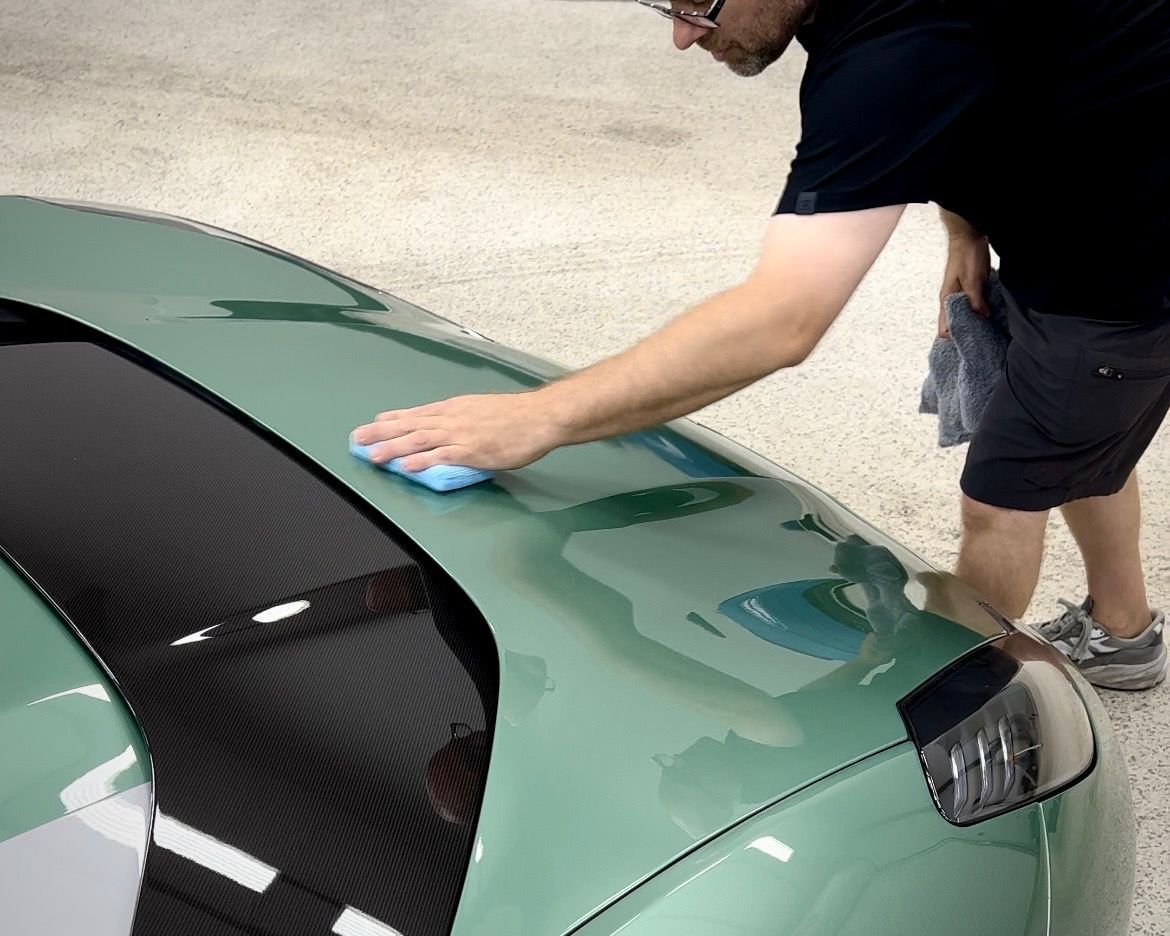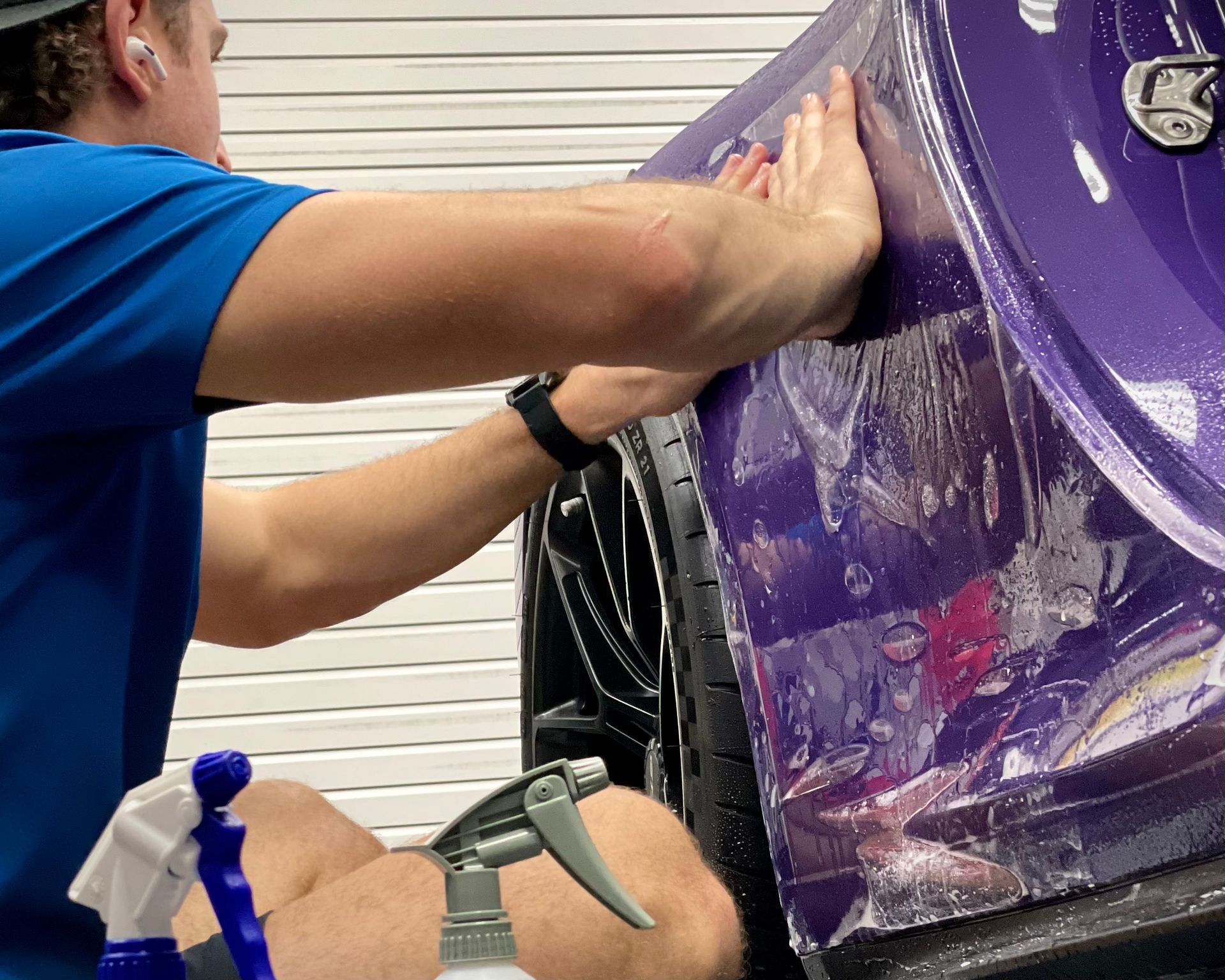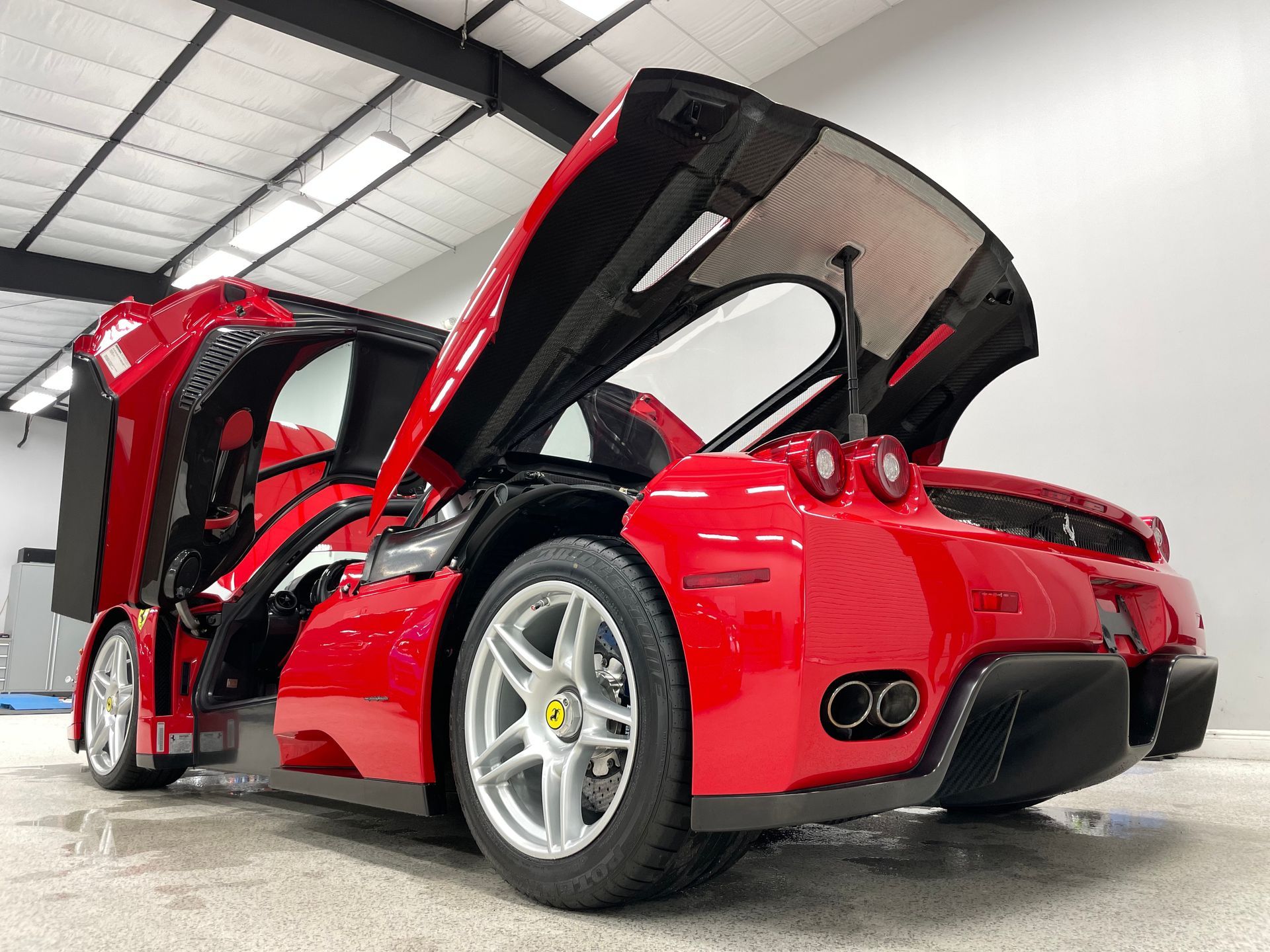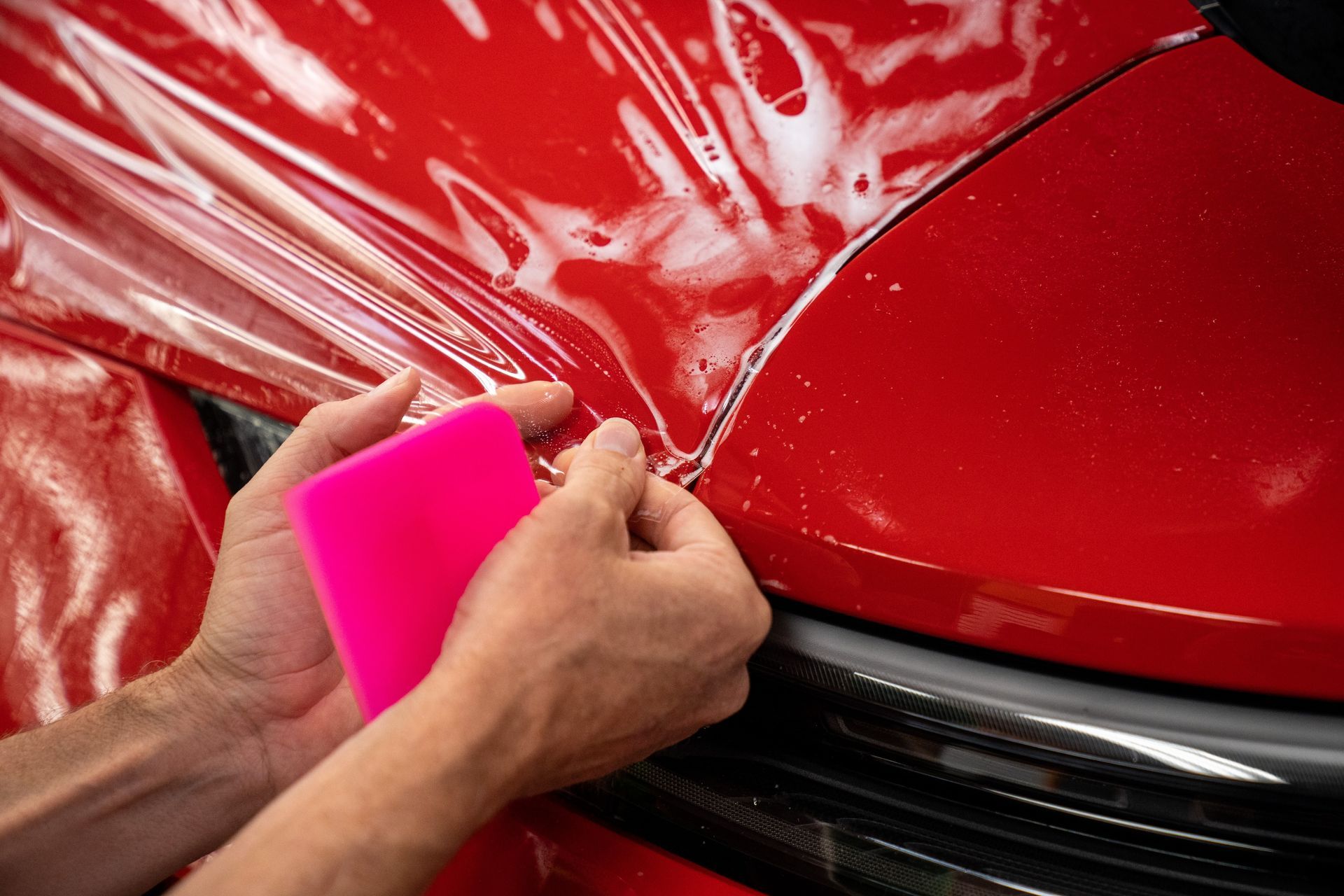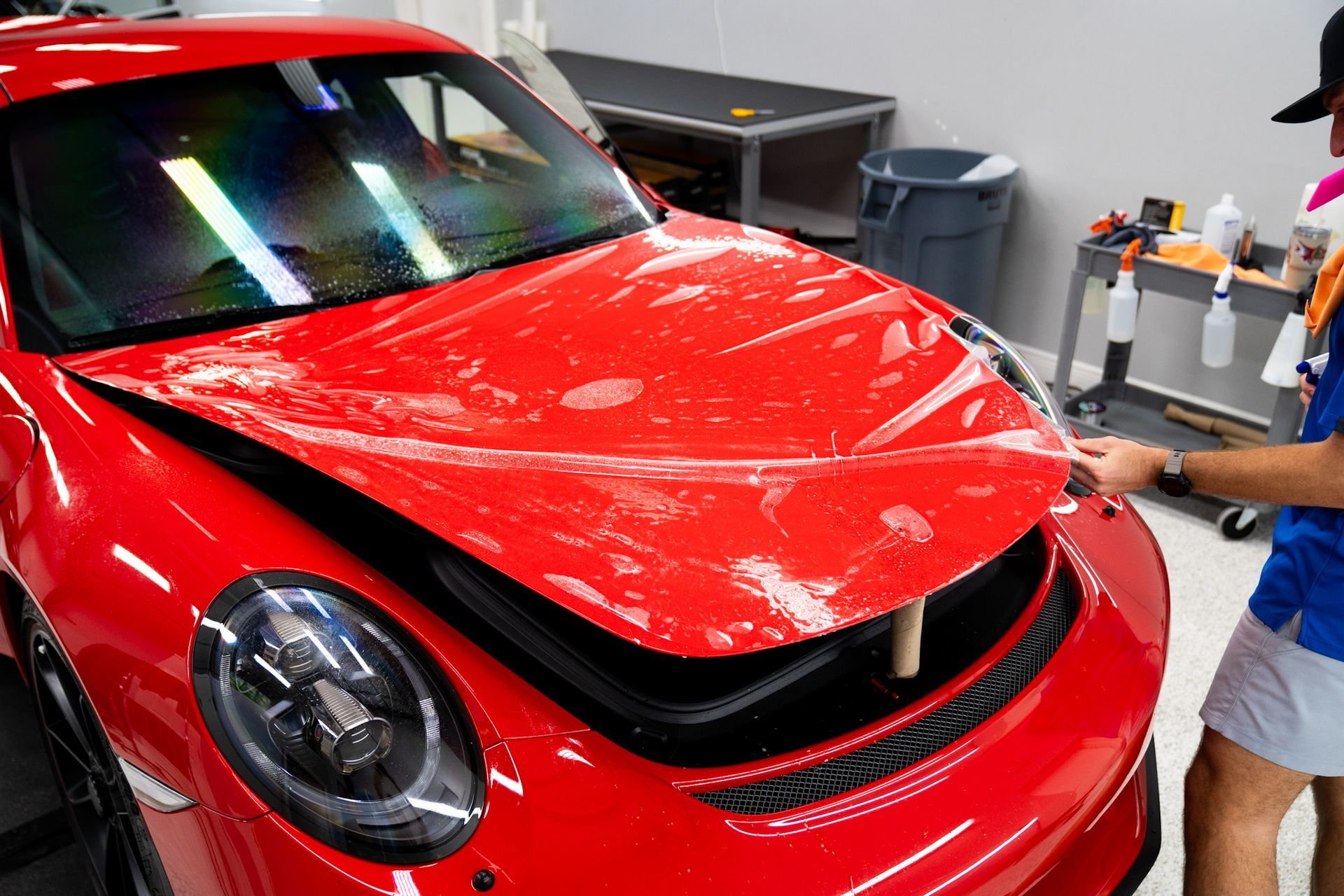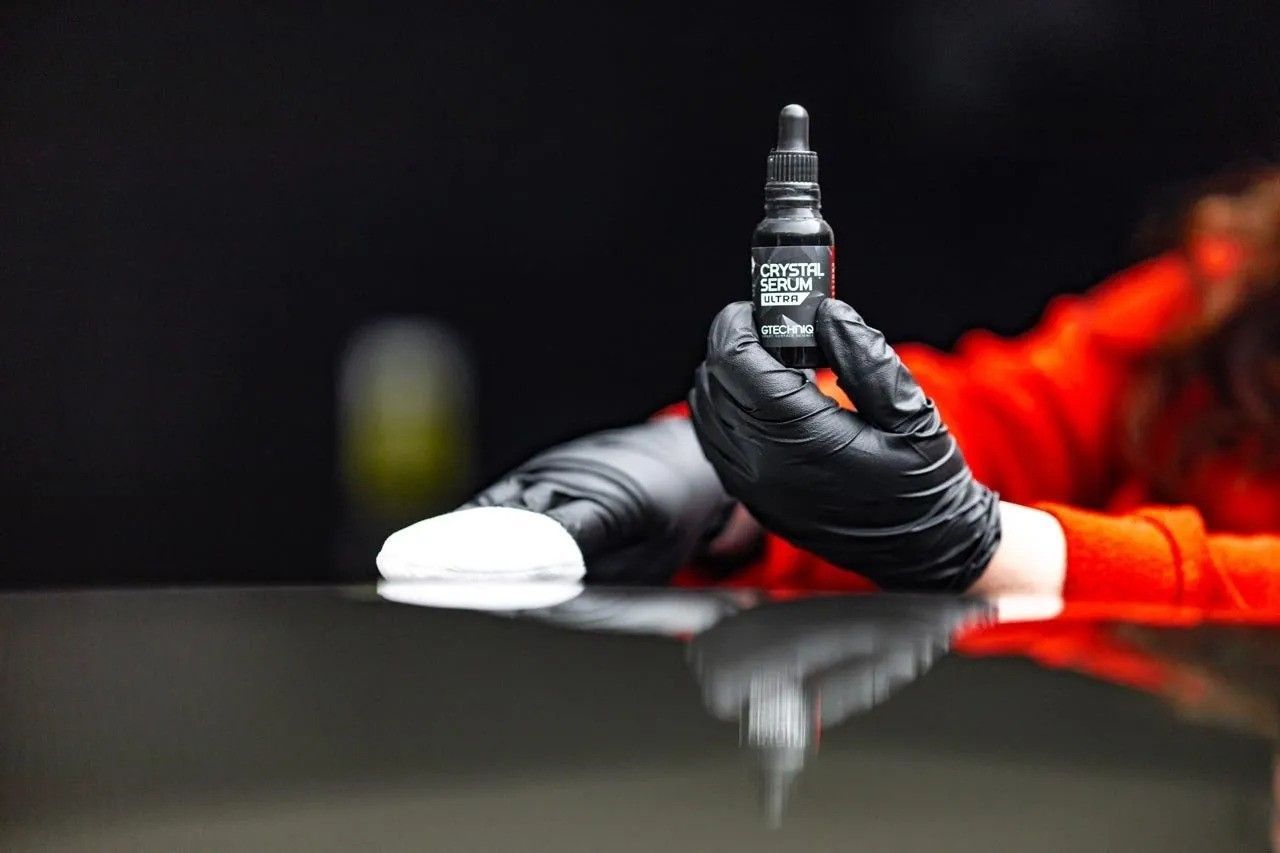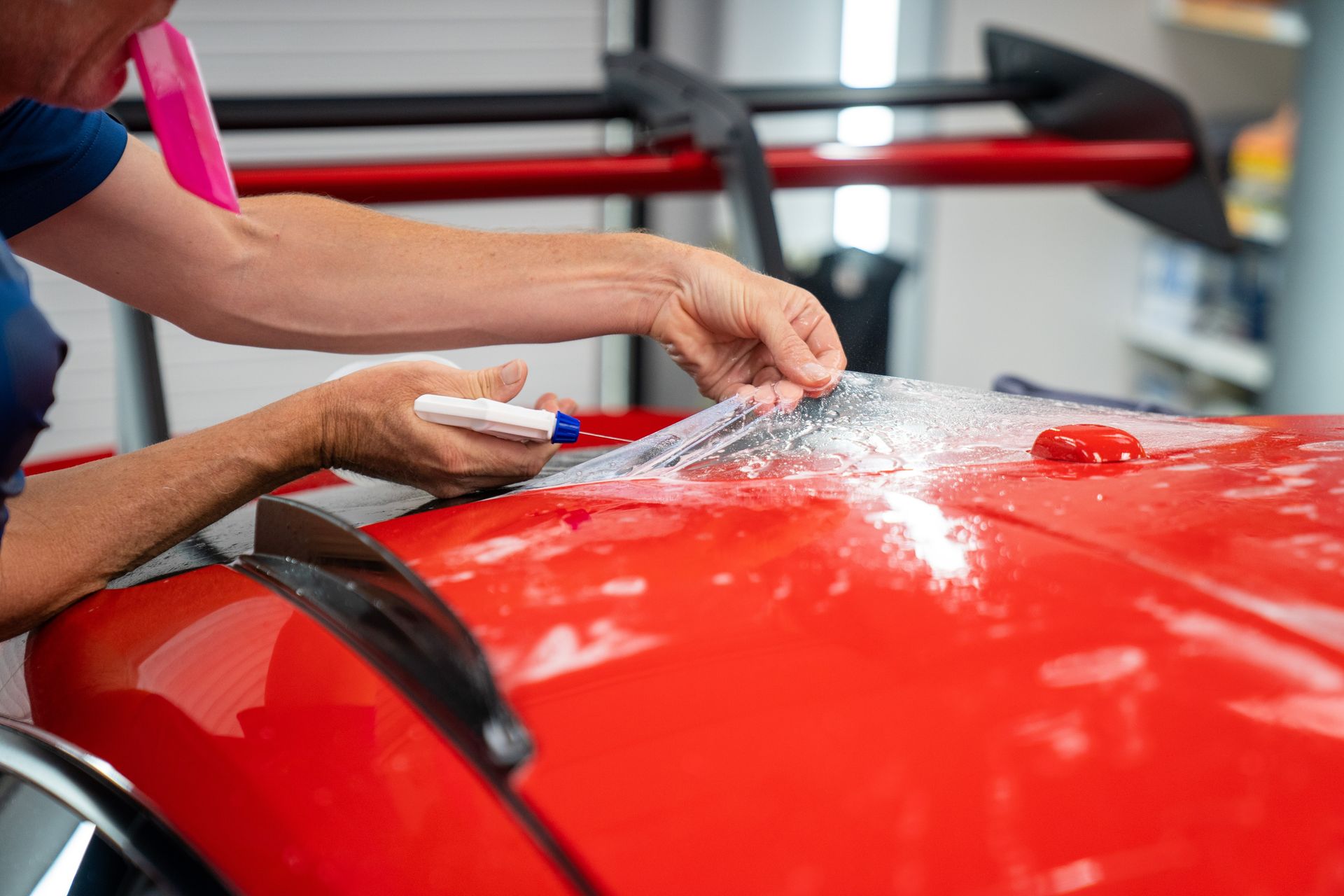Understanding the Importance of Proper Surface Preparation for Ceramic Coating Longevity
CALL (813) 723-9679
GET A FREE ESTIMATEAre you ready to give your vehicle that glossy, just-off-the-lot shine? If you're diving into the world of ceramic coatings, there's one key truth to remember: surface preparation is everything. Without properly prepping your car's paint, even the best ceramic coating will struggle to stick, leaving your efforts in vain. Think of it like baking a cake; you wouldn’t pour the batter into a dirty pan and expect a perfect result, right? A little elbow grease goes a long way in ensuring that your ceramic coating lasts longer and looks great. Let’s take a closer look at why preparing your vehicle’s surface is so important and how to do it right.
Proper surface preparation is crucial for ensuring the longevity and performance of ceramic coatings by enhancing adhesion and preventing premature failures. Thoroughly preparing the surface, which includes washing, decontaminating, and potentially polishing, creates a clean and smooth substrate that allows the coating to bond effectively, resulting in improved durability and aesthetic finish.
Why Surface Prep Matters for Ceramic Coating
Proper surface preparation is vital because it directly influences how well the ceramic coating adheres to your vehicle’s paint. When you take the time to prepare a clean and smooth surface, you're essentially creating a foundation for optimal bonding. Imagine trying to build a sturdy house on shaky ground—it's bound to fail. If any contaminants, such as dirt or oils, linger on the surface, they can interfere with proper adhesion, leading to premature coating failure.
- Improved Adhesion: A key component of successful ceramic coating application is improved adhesion. The better the surface prep, the stronger the bond between the coating and the paint. Using products like Q2M Prep ensures that oils and residues from previous detailing stages are effectively removed. It’s specifically designed to dissolve those stubborn contaminants more efficiently than simple isopropyl alcohol mixtures. Think of it like painting a wall; you wouldn’t paint over dirty or flaking paint if you want it to last—doing so would set you up for disappointment.
- Increased Longevity: When it comes to longevity, studies show that careful steps in surface prep can extend the life of ceramic coatings by as much as 40%. For instance, consider two identical cars parked side by side. One undergoes meticulous preparation before applying the ceramic coating, while the other receives a quick wash with no further attention to detail. In harsh weather conditions, the well-prepared car will maintain its coating integrity significantly longer than its poorly prepared counterpart. Investing in an expensive protective coat without proper application is futile.
- Uninterrupted Gloss: Beyond practicality, surface prep plays a critical role in maintaining an uninterrupted gloss finish. If you don’t meticulously clean, polish, and decontaminate your vehicle's surface, imperfections will impact how reflective and smooth the coating appears. Investing time in achieving a perfectly cleaned car isn’t just about aesthetics—it’s about preserving that showroom-like shine for years to come.
Having highlighted the significance of thorough preparation, we can now turn our attention to the specific measures that will ensure your vehicle’s surface is primed for coating application.
Steps to Prepare Your Surface for Coating
- Washing Thoroughly: Using a high-quality automotive shampoo is essential here; it’s specifically formulated to be gentle on your car's paint while offering powerful cleaning capabilities. Not only does it helps remove loose dirt and grime, but it also lays the groundwork for everything that follows. I recommend diluting 1 ounce of shampoo per gallon of water for the best results. You'll notice how a proper wash can transform the surface to shiny perfection. However, washing alone isn't enough. Imagine your car has been parked under a tree; over time, it might collect tar or tree sap along with dust from the road. This brings us to the second step: decontaminating the surface using a clay bar. This magical tool works wonders to remove bonded contaminants that regular washing often can’t touch. By gliding the clay bar across the surface with a suitable lubricant, you create a silky-smooth finish free from microscopic debris; this is crucial because any remaining particles can prevent the coating from adhering properly, ultimately jeopardizing its longevity.
- Polishing and Correcting the Paint: Now that you've washed and decontaminated, it's time for some TLC: polishing those imperfections if they exist. A dual-action polisher equipped with appropriate polishing compounds—like 3D One or Meguiar's M105—is your best friend here. Think of polishing as leveling out an uneven surface; you're aiming for glass-like clarity without defects. Remember, imperfections in the underlying paint will telegraph through whatever protective layers you apply above. Once your car's surface shines like new, it's vital to ensure that any oils or residues are gone before applying ceramic coating—this leads us to our final step.
- Degreasing with an IPA Wipe-Down: The last phase is critical: degreasing with an isopropyl alcohol (IPA) wipe-down. This isn’t just any wipe-down; it’s about using the right solution at the right concentration. A 70% IPA solution works best for removing any leftover traces of oils from detailing products you've used so far. It’s essential for ensuring optimal bonding between the ceramic coating and your newly prepared surface. What you want during this step is to keep wiping until you're absolutely certain there are no oily residues left—your labor deserves nothing less!
After following these preparation steps, you’ll ensure that your ceramic coating adheres effectively to provide long-lasting protection and appearance enhancement to your vehicle. Each step feeds into the next, yielding results that make turquoise blues and deep reds truly sparkle when protected by ceramic coatings. With a solid understanding of these foundational steps, we can now explore the key tools and products that enhance this prep process even further.
Essential Tools and Products for Prep
Investing in high-quality tools transforms the often tedious task of surface preparation into a highly effective process, ensuring both longevity and a pristine finish for your ceramic coating. One essential item on your shopping list should be high-quality automotive shampoo. This isn’t just any detergent; it’s formulated specifically to break down dirt and contaminants without stripping away existing wax or sealants. Using a quality shampoo ensures that you start with a clean slate.
Following that initial wash, you may find yourself facing stubborn surface contaminants that need addressing—this is where a clay bar or clay mitt comes into play. Clay bars are remarkable at removing embedded particles like tree sap or brake dust, which regular cleaning simply doesn’t touch. Remember to lubricate the surface adequately when using a clay bar to avoid marring the paint, ensuring that your car remains smooth and free from imperfections.
After decontamination, the next important tool is a dual-action polisher, which plays a key role in correcting paint imperfections. When employing a polisher, choose an appropriate pad and cutting compound tailored to your requirements, as different pads serve various purposes—from heavy cutting to finer finishing. No detailer should underestimate the importance of microfiber towels during this process. These aren't just ordinary cloths; they are specially designed with high GSM (grams per square meter) for superior absorption and softness, preventing scratching or swirling on freshly cleaned surfaces. Using new or conditionally safe towels is critical! Old or worn-out towels could inadvertently push around oils instead of lifting them off entirely—a mistake that could sabotage your entire preparation efforts.
Speaking of oils and residues, this is where an IPA solution—like isopropyl alcohol—comes into play when it's time to degrease your freshly cleaned car's surface. The right proportion (above 50%) in your alcohol solution provides essential cleaning power. However, beware: not all IPA products are crafted equal; some lack sufficient lubrication that prevents marring during application.
Transitioning from tools to products specifically designed for prep work can significantly enhance results. For example, consider utilizing Q²M Prep, a pre-coating degreaser developed to dissolve oils and residues left over from previous detailing stages. This product outperforms traditional IPA mixtures by providing better bonding with ceramic coatings while ensuring optimal durability. A smart detailing approach involves using approximately 150 ml of Q²M Prep per vehicle alongside highly absorbent microfiber towels for efficiently lifting dissolved oils.
Alongside Q²M Prep, don’t overlook the power of iron removers, which chemically weaken iron particle bonds embedded in paint surfaces. This treatment goes beyond standard washing by ensuring thorough decontamination before applying any protective layers. Lastly, having access to detailing brushes makes tackling intricate areas much more manageable. They aid in reaching tricky corners or crevices where dirt loves to hide. With their specialized shapes and materials, detailing brushes can simplify cleaning tasks that would otherwise require significant effort and precision.
As you gather these tools and products, it's equally important to recognize potential traps and common mistakes that could undermine your painstaking preparation efforts.
Avoiding Common Preparation Mistakes
One of the most significant errors you can make when preparing for ceramic coating application is skipping the initial wash. It might seem like a time-saving shortcut, but it leaves residual dirt on your vehicle. This leftover grit acts like sandpaper against your paint during subsequent applications, scratching and marring the surface. Just imagine using a dirty sponge—you're not only spreading grime but actively damaging the finish. Start fresh with a thorough wash using pH-neutral soap to protect your paint’s integrity right from the beginning.
Moving on, let’s discuss another common error: using old or ineffective microfiber towels during this meticulous process. When it comes to wiping surfaces before applying the ceramic coating, old towels are not just unhelpful; they can actually sabotage your efforts. Towels that have lost their absorbency may push oils and contaminants around instead of lifting them away. This could result in undesirable residues left on the paint, further hindering adhesion.
To ensure the best results, always choose new, high-absorbency microfiber towels specifically designed for detailing tasks. They make all the difference, allowing you to lift dissolved oils effortlessly without leaving scratches behind. The journey doesn't end there; let's explore the importance of polishing. Another critical mistake is insufficient polishing before applying the coating. Skipping this step means any existing scratches, swirl marks, or imperfections on your vehicle's paint will be sealed under the ceramic layer. Once encased like this, these flaws can't be corrected without stripping the coating and starting over.
With an understanding of these potential pitfalls, it becomes clear that addressing every detail in preparation can lead to impressive results in ceramic coatings. Next, let’s turn our attention to ways to ensure your coating stands the test of time.
Best Practices for Long-Lasting Coating
Achieving long-lasting results with your ceramic coating requires finesse during and after application. Careful attention to technique can significantly enhance the durability of your coating, ensuring that your vehicle remains protected and has an eye-catching finish for years to come.
- Careful Application: When applying ceramic coating, aim for thin, even layers. Think of it like painting a canvas: too much paint in one spot will create drips and unevenness. If you can visualize creating overlapping strokes when applying your coating, you're on the right track. This ensures full coverage and prevents pooling—a common mistake that results in unsightly imperfections. As you work through each section of your vehicle’s surface, maintain a consistent speed and pressure with your application pad. Periodically change pads as they become saturated; this helps maintain control and maximizes effectiveness.
- Curing Time: After meticulously applying the ceramic coating, the next crucial step is curing. Adhere strictly to manufacturer guidelines regarding curing time—typically allowing the coating to set undisturbed for at least 24 to 48 hours. During this period, it's imperative to keep the vehicle dry! One popular brand even suggests waiting a full week before exposing your car to harsh environmental conditions like rain or snowfall. Note: This initial curing period is when adhesion occurs, allowing your ceramic coating to bond tightly with the surface beneath it. Just as baking bread requires you to leave it in the oven long enough for it to rise without disturbance, a ceramic coat requires careful patience during its curing phase for optimal strength.
- Environmental Factors: Another key aspect of successful application lies in controlling your environment during the process. Ideally, ceramic coatings should be applied indoors where temperature and humidity levels are stable. Avoiding the outdoors minimizes the risk of dust particles settling onto your freshly coated surfaces as they cure—this could compromise both appearance and performance later on. If working indoors isn't an option, find a shaded area away from windy conditions to minimize exposure to contaminants during application. Taking these precautions ensures that your hard work yields impressive results that last longer.
Understanding how to care for a ceramic-coated vehicle post-application is vital for maintaining its sleek appearance and protective qualities over time. Let's explore effective strategies that keep your ceramic coating performing at its best.
Post-Coating Care and Maintenance Tips
Ongoing maintenance is crucial for maximizing the life of your ceramic coating. By sticking to a routine, you not only enhance the coating's performance but also keep your vehicle looking its best. Regular washing is the cornerstone of this regimen. It’s advisable to wash your car biweekly using a pH-neutral shampoo. This type of shampoo is specially formulated to cleanse without stripping away the coating. Conversely, harsh bristle brushes typical in automatic car washes can create scratches or diminish the coating’s effectiveness, so it’s better to avoid them altogether.
Alongside proper washing techniques, incorporating maintenance sprays into your routine can work wonders. These sprays, like silica-based options, are designed to enhance hydrophobic properties and add an extra layer of slickness to the surface. Just a light application every few months will ensure that water beads up beautifully instead of pooling on the surface. Think of it as giving your vehicle a protective refresh. These products don’t just help keep your car shining; they also act as a barrier against environmental contaminants.
Another vital aspect of post-coating care involves addressing stubborn substances quickly. When bird droppings or tree sap land on your freshly coated surface, it's imperative to wash them off immediately. Allowing these materials to sit can lead to chemical breakdown, which undermines all the protection that you’ve applied. A swift response keeps your coating intact and preserves that refreshed appearance you worked hard to achieve. One enthusiast shared their experience: after implementing consistent post-coating maintenance, they managed to maintain the flawless look of their ceramic coating for over three years! The dedication to these small upkeep tasks reflects how critical they are in keeping your investment looking like new.
Finally, storing your vehicle properly plays a significant role in extending the life of ceramic coatings. If possible, consider keeping your vehicle in a garage or shaded area to shield it from UV rays and other environmental factors that may cause wear over time. Regular inspections every six months will also allow you to catch early signs of wear and tear, enabling prompt reapplication if necessary.
As you can see, with thoughtful practices and regular attention, maintaining your ceramic-coated vehicle does not have to be burdensome—it's merely a habit that leads to lasting satisfaction and preservation of its pristine condition. In summary, adopting consistent care routines and being mindful of environmental impacts will help extend the life of your ceramic coating while keeping your vehicle looking exceptional.
Superior Ceramic Coating Protection in Tampa, FL
Keep your vehicle’s paint protected and shining with Presidential Automotive Detailing’s expert ceramic coating services in Tampa, FL. Our high-quality coatings create a hydrophobic barrier that defends against UV rays, dirt, and everyday wear while enhancing your car’s gloss and depth. With professional application and long-lasting durability, your vehicle will stay cleaner and easier to maintain. Don’t let Florida’s harsh conditions take a toll—schedule your ceramic coating service with Presidential Automotive Detailing today!



